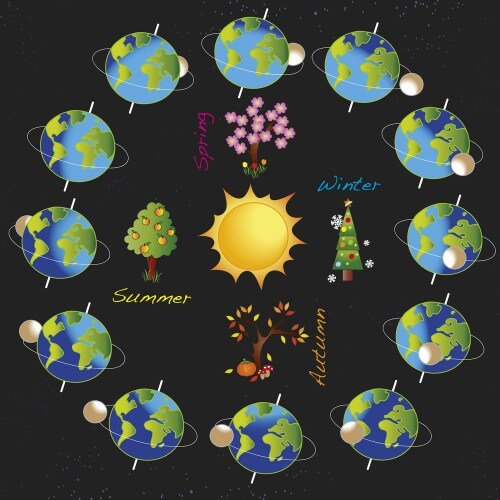Tomorrow, March 21, 2014 is the vernal equinox, at least in Israel, where this equinox occurs at 00:45. Heaven combines more events on this special day

see also: On March 20: a partial solar eclipse will be visible from Israel
Tomorrow, March 21, 2014 is the vernal equinox, at least in Israel, where this equinox occurs at 00:45. In all four time zones in the USA as well as in Greenwich, spring begins on March 20. This year this day has a greater astronomical significance than usual. There will be two astronomical events in or near it - the first is of course the solar eclipse.
An equinox solar eclipse is a fairly rare event, although the next one will occur in 2034. The total eclipse path will pass over the Faroe Islands, near the coast of Scotland and end at the North Pole.
In addition, today, the 20th of March, a second astronomical event is also expected - a super moon in the sky, the moon, which reached Phrygia - the closest point in its orbit to the earth 24 hours ago, becomes a 'new moon' on the 20th. Although it will not be seen because of this, it will have a larger than average effect on the oceans.
The English term for Equinox Day is derived from the Latin word meaning "equal nights". On that day all over the world the days and nights are more or less equal, on this day, the sun rises exactly in the east and sets exactly in the west. The reason for this - on the day of the equinox, the Earth's inclination in relation to the Sun is zero, which means that the Earth's axis does not point towards the Sun or away from it. (However, the Earth's inclination relative to the orbital plane, or the ecliptic plane is always about 23.5 degrees.
The vernal equinox occurs when the sun crosses the true celestial equator - or the imaginary line in the sky above the Earth's equator from north to north on one of the days between the 20th and 23rd of March. In other words the sun moves north of the equator during the March equinox. In the southern hemisphere this is the autumnal equinox, the vernal equinox in the southern hemisphere occurs in September.
.
So why, despite the name, is there really no equality between day and night?
Astronomer George Greenstein says that sunlight is deflected by the Earth's atmosphere. This is why the sun looks squashed at sunset. They are deflected in such a way that we can see the sun before it rises and after it sets. The second reason why the day is longer than the night is that the time is considered a day from the moment the first ray of the sun broke and it ends when the last ray of the sun set. If the sun were to shrink to the size of a point, and we lived in a world without air, the vernal and autumnal equinoxes would be worthy of the nickname "equal nights".
The old farmer almanac

3 תגובות
What time will the solar eclipse and the super moon occur? . Can we see them from Israel?
You got the date wrong in the body of the article. You wrote 2014 instead of 2015. For your attention.